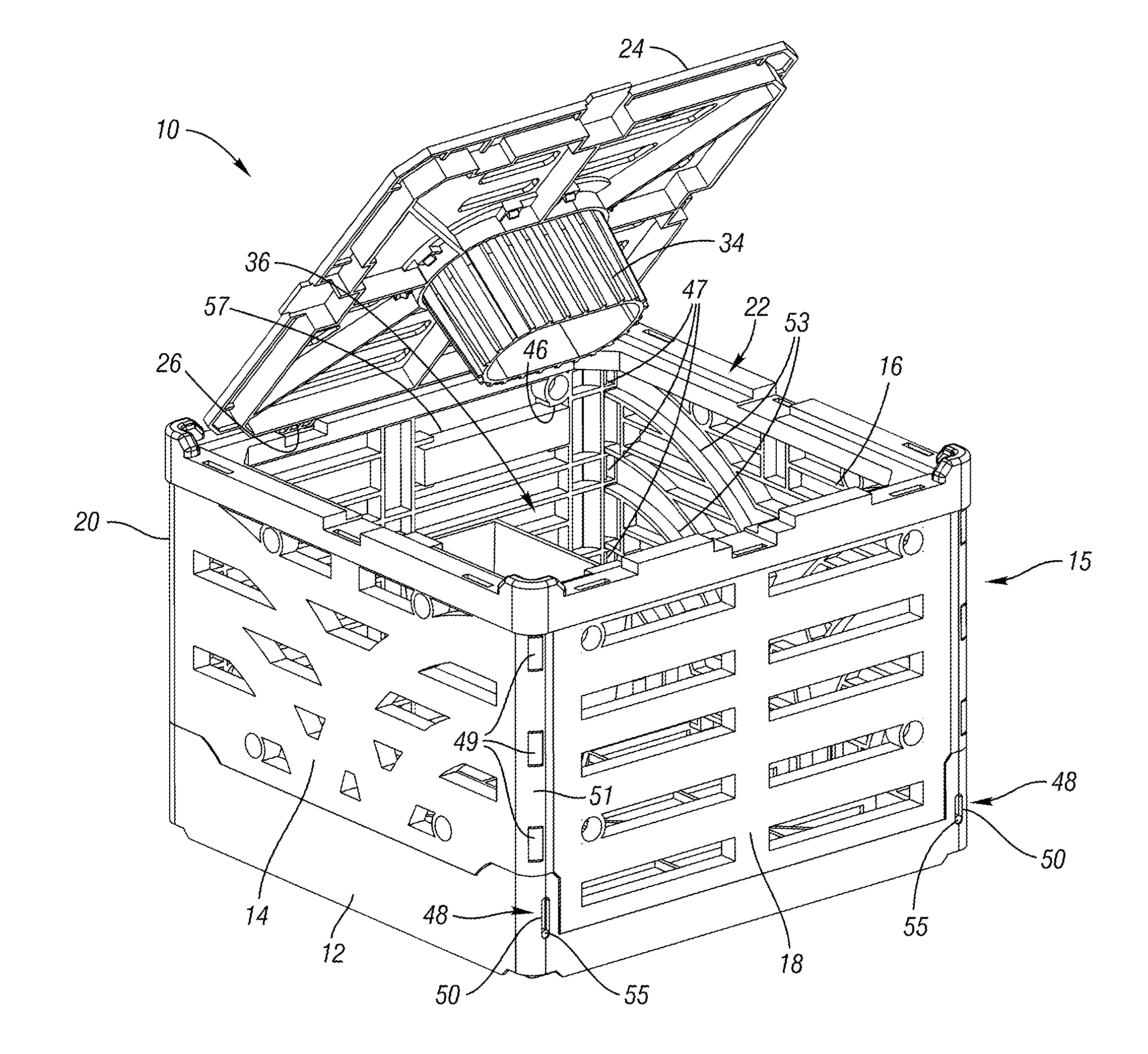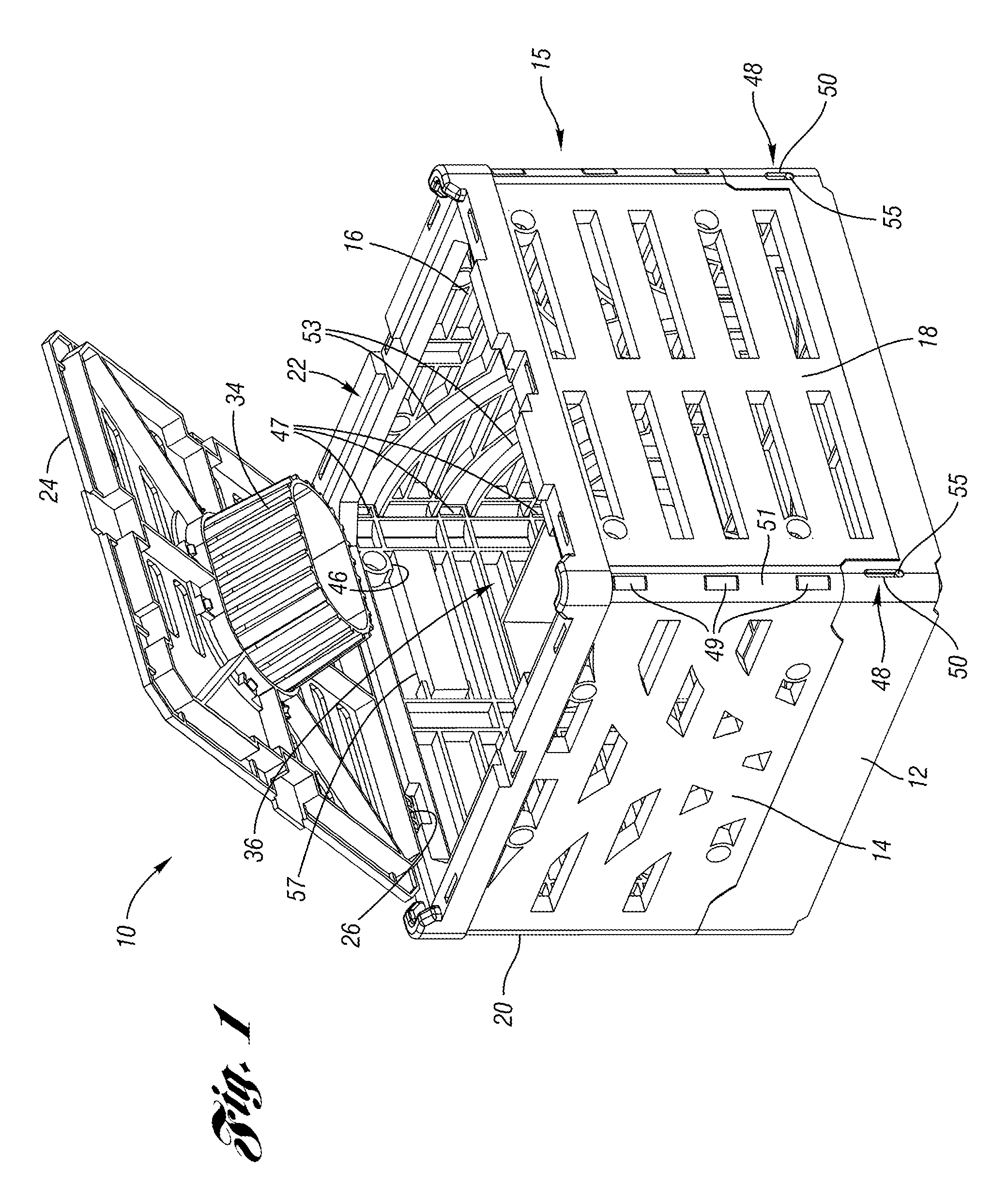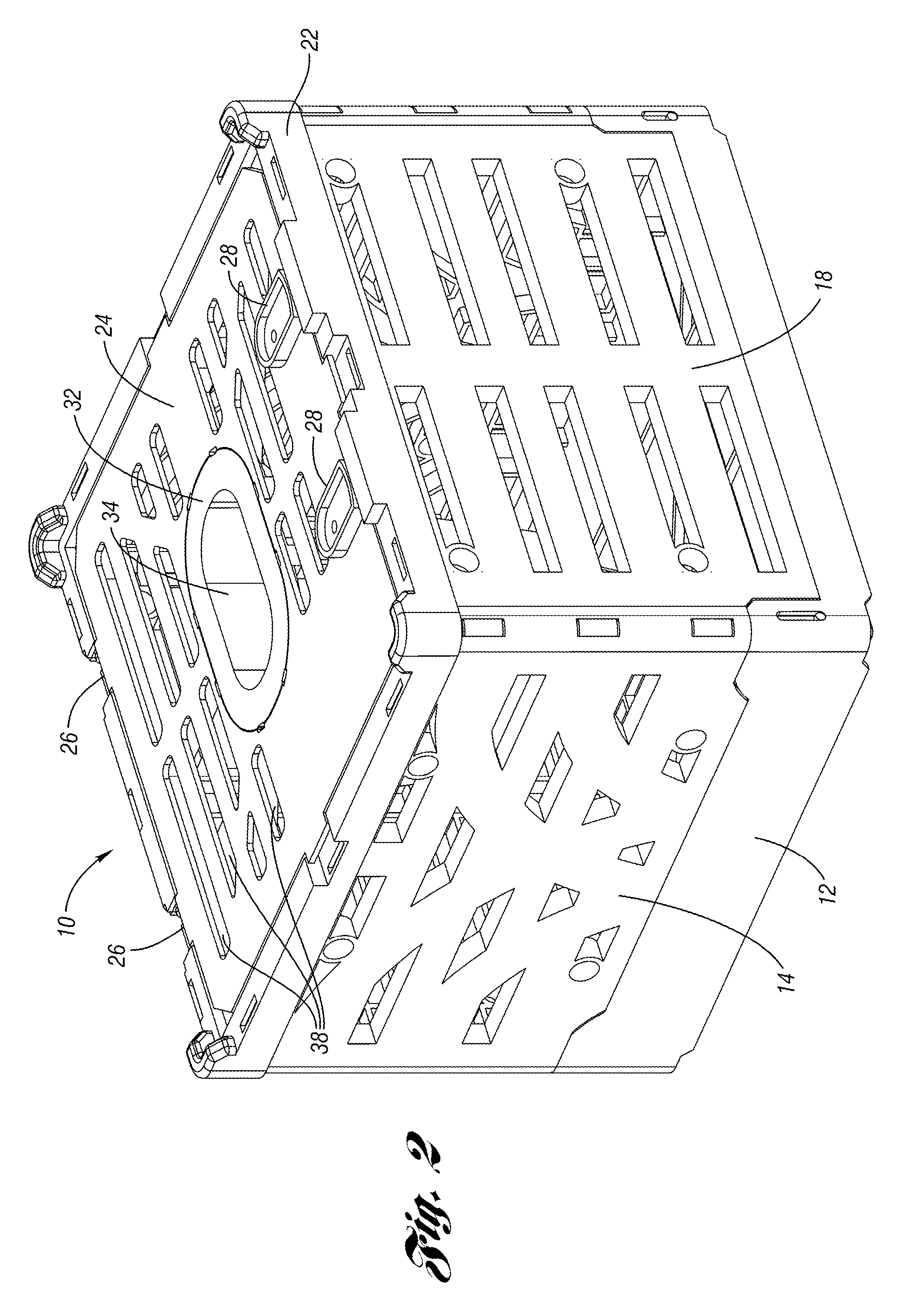Collapsible container
a container and lid technology, applied in the field of collapsible containers, can solve the problems of insufficient connection between the walls and the trap (with its concrete base), the time-consuming and difficult assembly of the trap, and the sensitivity of the crustacean trap of this type to damage, etc., and achieve the effect of strengthening the connection of the sidewalls
- Summary
- Abstract
- Description
- Claims
- Application Information
AI Technical Summary
Benefits of technology
Problems solved by technology
Method used
Image
Examples
Embodiment Construction
[0026]FIGS. 1 and 2 illustrate a collapsible container 10 configured for trapping crustaceans, including but not limited to, crabs, lobsters, crawfish, etc. The container 10 could also be utilized to trap other types of marine animals, or other animals, or could be configured for some use other than as a trap. The container 10 includes a base 12, opposing side walls 14, 16 and opposing end walls 18, 20, that extend from the base 12, and a top ring 22 disposed on upper ends of the side walls 14, 16 and end walls 18, 20. The base 12, the side walls 14, 16 and the end walls 18, 20 form a trap body 15. The example container 10 is collapsible, as is further discussed below. The container 10 components can be injection molded from a thermoplastic material, for example.
[0027]Each end wall 18, 20 includes a plurality of tongues 47 positioned at each side of the end walls 18, 20. The tongues 47 are partially received within openings 49 of flanges 51 of the side walls 14, 16 to assemble the t...
PUM
 Login to View More
Login to View More Abstract
Description
Claims
Application Information
 Login to View More
Login to View More - R&D
- Intellectual Property
- Life Sciences
- Materials
- Tech Scout
- Unparalleled Data Quality
- Higher Quality Content
- 60% Fewer Hallucinations
Browse by: Latest US Patents, China's latest patents, Technical Efficacy Thesaurus, Application Domain, Technology Topic, Popular Technical Reports.
© 2025 PatSnap. All rights reserved.Legal|Privacy policy|Modern Slavery Act Transparency Statement|Sitemap|About US| Contact US: help@patsnap.com



